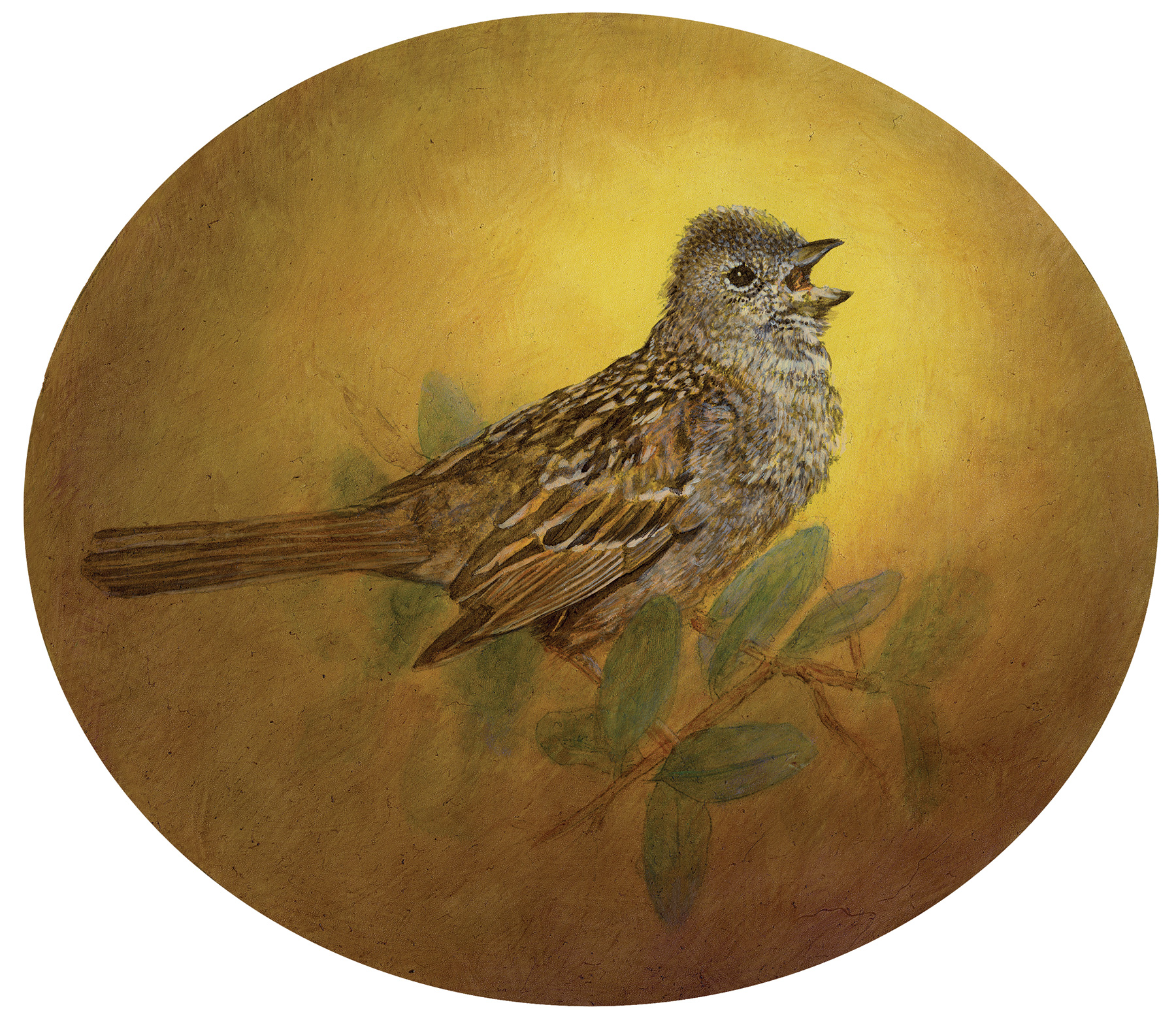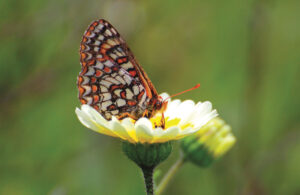
“I’m so tired.” “Oh, dear me.” “No gold here.”
No, these whiny, defeatist lines are not the notepad scribblings of some Berkeley therapist, but rather three of the mnemonics bird-watchers use to remember the plaintive three-note winter song of the golden-crowned sparrow.
Known in Latin as Zonotrichia atricapilla (the black-haired bird-with-bands), the golden-crowned sparrow is a widespread winter resident of the San Francisco Bay Area. The adult sparrow is marked by its yellow-gold cap, wrapped in a brown-black crown (more black in summer, more brown in winter). Ornithologist William Leon Dawson described the cap as “not gold at all, but pyrite yellow . . . equal parts yellow and black.”
Though the golden-crown is not as well-studied as its more famous sister species, the Bay Area resident white-crowned sparrow, the two species share an estimated 99.9 percent of their genes. That makes the two species’ first-winter juveniles difficult to separate in the Bay Area, a problem enhanced by the fact that they skulk together in shady, shrubby yards and hillsides. Watch for the grayish bill of the golden-crown; white-crowns’ bills are more yellow or orange.
In summer, golden-crowned sparrows nest in a wide swath of the Pacific Northwest, from British Columbia north through the southern Yukon and the southern two-thirds of Alaska. They’re happiest residing in alders, willows, and small conifers, preferably with a touch of water nearby, but occasionally on dry hillsides and up to the tree line.
Come late summer, the post-breeding golden-crowns make a spectacular southward shift in their range, with the earliest migrants arriving in California around September 1. By mid-October, the entire golden-crowned sparrow species has moved to a range extending from southern British Columbia to the very northern part of coastal Baja California.
And every one of them knows where it’s going! Or perhaps, they know where they’ve been.
Because they group in small flocks and happily graze on store-bought seed, golden-crowns are relatively easy to mist-net or trap for banding purposes. By studying the annual return of banded (versus unbanded) golden-crowned sparrows, biologists can measure a local population’s winter philopatry (“love of place”), the proportion of birds that return to the same place each year.
Studies done in the 1930s in Berkeley and Stanford demonstrated golden-crown winter return rates of up to 28 percent, meaning that 28 of 100 birds were retrapped at the very same site in subsequent years. In a 1971 San Jose State University study, D.L. Vargas found a return rate of up to 30 percent at Point Reyes, with sparrows often returning to a precise winter home range.
Just how does a 30-gram sparrow travel 2,000 miles in the late summer and find the same quarter-acre of coastal scrub habitat? No handheld gps unit here. Migration biologists would say golden-crowned sparrows have a detailed map and a keen sense of direction. They have an inner datebook that rivals any Palm Pilot. And the best part: It all runs on bugs, seeds, and buds.
Thanks to this avian precision, golden-crowned sparrows are great date-keepers for Bay Area bird-watchers. Not only do they show up in late September, but they also announce their arrival. UC Berkeley ornithologist Joseph Grinnell described the bird’s song as “the extremely sad quavering song of two syllables.” But in winter, the golden-crown often sings three notes, and a century ago Joseph Maillard defined the song as “three notes given in a descending scale with intervals of thirds: sol, mi, do.”
As to what the song might mean, well, that’s in the ear of the listener. Apparently depressed Yukon gold miners of the 19th century heard “no gold here,” projecting their worst fears on an innocent but perhaps too-chatty sparrow.
After spending a lucrative California winter nibbling grass buds, scratching for larval bugs, and scarfing millet from backyard feeders, golden-crowned sparrows are among the last of the migrating songbirds to leave for parts north. In her 1920s bird guide, my grandmother, who lived in Woodside, penciled the date “April 4!” next to the golden-crown chapter, although many may stay in the Bay Area into early May. Four months and four thousand miles later, they will return, many to the very same perch.




